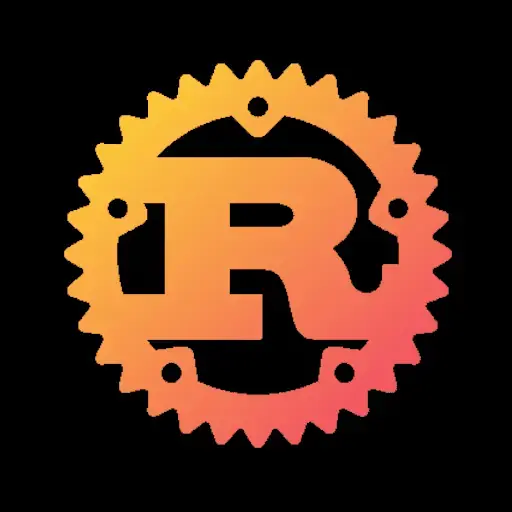and don’t ever pull the mask off by reading the descriptor and meta object protocol.
- 0 Posts
- 65 Comments
in Scala, everything is an expression, including “if”, maybe kotlin is the same?
why is this a YouTube video?
 2·17 days ago
2·17 days agoperfect spot for a Saudi billionaire’s mountain villa!

 3·24 days ago
3·24 days agoIt’s a single counterexample. there are many, many such libraries for C and the programmer does not have to roll their own.

 42·24 days ago
42·24 days agoOK, think of all the other C collection libraries there must be out there!

 31·24 days ago
31·24 days agoThe C programmer will need to either roll his own, which may not be an option if time Is limited, or choose a lower-performance alternative.
What are you talking about? https://docs.gtk.org/glib/data-structures.html

 5·1 month ago
5·1 month agoThe things the author mentioned drive me nuts about visual studio…. Especially trivial completions, like brace pairing, their thirst to add these newb-crutches leads me to backspacing and retyping over and over again, trying to figure out what the editor did that I didn’t even notice and how to undo it. For something that is literally a 20ms muscle memory action for any experienced programmer.

 2·3 months ago
2·3 months agoYou can say you’re running Java and write components in Kotlin or Scala, no one knows after the module is published!

 1·3 months ago
1·3 months agoThere is a bit more overhead when you can’t just overwrite a value in memory. But cpu time and memory space are some of the most cheap and straightforward resources to scale up compared to engineering time to resolve consistency bugs.
There is also a performance hit associated with mutexes or locking required to ensure mutable structures are updated consistently, and many high-scale systems have moved to append-only logs and copy-on-write semantics - structures that leave already-written data in place - because mutability/locking doesn’t scale.

 1·3 months ago
1·3 months agoOh, regarding copying data - immutable collections are based on https://en.m.wikipedia.org/wiki/Persistent_data_structure - when a change is applied, you get back a reference to a new data structures where as many inner references as possible are shared with the old one. So, all the parts that didn’t change, are not copied.
For something like a Scala case class (similar to a record), o.copy(membername1 = newvalue) returns a new object, with a new membername1 reference, but all other member references are the same as the copied-from object. So it’s a shallow copy with minimal changes.
you might see how default immutability as a policy makes this more predictable and able to be reasoned about - any mutable object in an object graph that has a shared reference in a copy may surprise you by suddenly changing state.
Of course, that’s the situation everywhere, all the time, in default-mutable languages. How many people set a default value of a Python function argument to [] or {} and were baffled when things started breaking because the instance of the default value was mutated?

 1·3 months ago
1·3 months agoI guess, as a Scala enthusiast, it’s second nature to me - Scala incorporates immutable-by-default into its design so there are accommodations for it (.copy() methods on case classes, well-thought-out operators and methods on collections, “val” bindings, expression-oriented syntax).
It also lets you have normal OO classes and mutable vars anytime you want them, so you’re not stuck in a corner like you may sometimes be in Haskell if you don’t know the applicable FP pattern.
This helped me out quite a bit in a recent programming test for an employment screen – the challenge was to implement a time based key value store. One of the requirements that was revealed was that it needs to be able to back up and restore – this was as simple as storing the current root of the data in a list or map; it is effectively a snapshot.

 1·3 months ago
1·3 months agoit’s not radical, it’s just a guarantee that if you hold a reference to an object, it won’t change state under you. It’s a bit like every object has MVCC and copy-on-write semantics built in.
It’s easy enough to edit the object, producing a new copy, and then explicitly store it back where it goes or send it to whatever consumer needs it.

 21·3 months ago
21·3 months agojeez dude you’re carrying a lot of baggage

 3·3 months ago
3·3 months agoOr pragmatic functional programming, or rediscovered by “OO” programmers who realize they are messing up the Redux store bad.

 1·3 months ago
1·3 months agoCheck my top level comment and several other replies on this post.
One I’ll mention here is “Tasks for testing and refactoring”. “Task” is the key word - testing and refactoring isn’t a backlog item that the product manager gets to deprioritize. (haha, like the product manager even realizes they are supposed to manage the backlog). It’s part of ongoing continuous codebase improvement and done whenever and wherever it’s needed.
I’ve been a software developer since 1997, I’d love to have a beer and shoot the shit with them!

 3·3 months ago
3·3 months agoI have not used that GORM, but ORMs have those problems generally.

 31·3 months ago
31·3 months agoI don’t see any ban of accountability, refactoring or debugging, coordination, or endorsement of screaming.
I recognize most of these as specific antipatterns that get adopted because some manager read a blog or no one actually had a clue was “agile” meant.

 2·3 months ago
2·3 months agoGroovy’s ORM? I recall it being Hibernate under the hood and I had to fight with it to avoid common problems like hidden IO and N+1 query blowups (iterating over a set of results and then touching the wrong property means you are making another network call for each), learning its particular DSL for schema definition and associations, and not having a way to represent any but the simplest SQL constructs. The usual ORM stuff.
To the extent that you can write a syntax-checked SQL statement and it deserializes the results into some collection of row objects, it’s fine. But that’s not the “ORM” part.


A gullibility filter